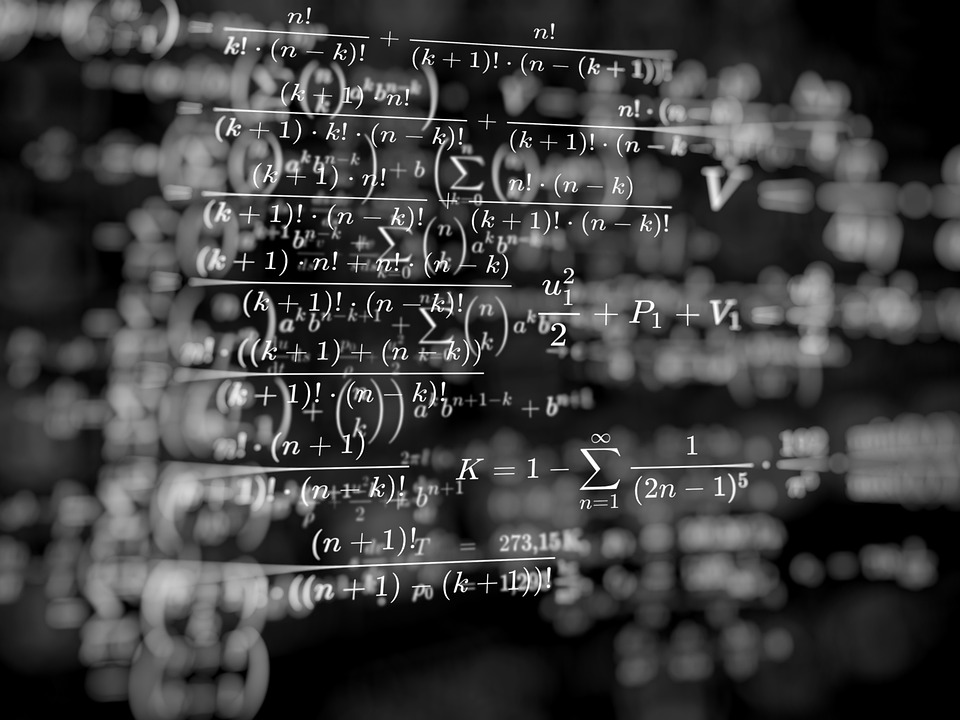Arithmetic collection: formulation, mannequin questions, and dialogue
An arithmetic collection is a collection of numbers with a continuing distinction between every pair of successive numbers. Since historic instances, arithmetic collection have supplied an vital basis in numerous fields of science, together with arithmetic, physics, economics, and statistics.
Understanding arithmetic collection is the inspiration for fixing issues that contain repeated addition of frequently rising numbers or values. On this materials, you’ll clarify some primary ideas and terminology associated to this collection.
Additionally, you will study a number of strategies for figuring out patterns and calculating values on this collection. You possibly can take note of the reason properly so as to perceive the idea of this collection.
Arithmetic sequences and collection
In arithmetic, there are two elements, particularly sequences and collection. It’s essential to know these two issues to grasp their variations and makes use of. This understanding will also be used so as to resolve issues properly.
Arithmetic sequences
An arithmetic sequence is a collection of numbers that has a hard and fast distinction between every pair of successive numbers. In the meantime, an arithmetic collection is the sum of all of the numbers within the arithmetic collection.
What distinguishes an arithmetic collection is that there’s a fixed distinction between every pair of consecutive phrases, whereas an arithmetic collection is characterised by the sum of numbers which have a continuing distinction.
To seek out the nth time period in an arithmetic sequence, there’s a common method that have to be used, which is Un = a + (n-1)b. On this method, Un is the nth time period, a is the primary time period within the sequence, n is the sequence of phrases you wish to discover, and b is the distinction between every time period within the sequence.
Subsequent, to calculate the sum of the primary n phrases in an arithmetic sequence, use the next common method: Sn = 1/2n(2a + (n-1)b). On this method, Sn represents the sum of the primary n phrases.
For extra info, a is the primary time period within the sequence, n is the variety of added phrases, and b is the distinction between the 2 phrases within the sequence.
By understanding these ideas and formulation, you may simply apply collection to arithmetic in several conditions and resolve issues that contain sequences of numbers with common addition.
arithmetic development
An arithmetic collection is the sum of the primary n phrases (Sn) within the arithmetic collection. The property of a collection in arithmetic is that every added numerical time period has a continuing distinction. For instance, you may observe the collection 1 + 3 + 5 + 7 + 9 + 11 + 13 + 15 + …, and so forth.
The distinction between an arithmetic collection and a geometrical collection lies within the sample or properties of the collection that apply. Sequence in arithmetic apply to arithmetic sequences, that are characterised by including numerical phrases along with a continuing distinction.
In the meantime, geometric collection apply to geometric sequences, the sample of which follows multiplication or division with a hard and fast ratio distinction between every time period.
Examples are as follows:
- Sequences in arithmetic: For instance, 1 + 3 + 5 + 7 + 9 + 11 + 13 + 15 +… The distinctive characteristic: The phrases of numbers are all the time added with a hard and fast distinction.
- Geometric collection: for instance 2 + 6 + 18 + 54 + 162 +… Distinctive options: Quantity phrases are created by multiplying by a hard and fast ratio.
Subsequently, the fundamental distinction between an arithmetic collection and a geometrical collection lies within the properties of the sequence sample. An arithmetic collection has a hard and fast distinction between phrases, whereas a geometrical collection follows a sample of multiplication or division with a hard and fast ratio between successive phrases.
Arithmetic collection formulation
The next is a proof of the formulation within the arithmetic collection:
1. Soko Kane (United Nations)
The method for locating the nth time period (Un) in an arithmetic sequence is as follows:
un = a + (n-1)b
Within the method above, “Un” is the worth of the nth time period you wish to know, “a” is the primary time period within the arithmetic sequence, “n” is the sequence of phrases you’re in search of, and “b” is the distinction between every time period within the sequence.
2. The sum of the primary n phrases (Sn)
As well as, there’s a method to calculate the variety of the primary n phrases (Sn) in an arithmetic collection, which is:
Sn = 1/2n(2a + (n-1)b)
On this method, “Sn” is the results of including the primary n phrases, “a” is the primary time period within the arithmetic sequence, “n” is the variety of phrases to be added, and “b” is the distinction between the 2 phrases within the sequence.
3. Center Quadrant (Utah)
Not solely that, however there may be additionally a method for locating the center time period (Ut) of an arithmetic collection:
Ut = (a + un) ÷ 2
On this method, “Ut” is the worth of the center time period, “a” is the primary time period within the sequence, and “Un” is the final time period within the sequence. To get the center time period, that you must discover out the worth of the primary time period (A) and the final time period (Un), after which divide their sum by 2.
Instance of arithmetic collection questions
Beneath are a number of examples of questions that may improve your understanding of traces and collection in arithmetic.
- Query: If the second time period of the collection is 5. If the overall worth of the fourth time period and the sixth time period within the collection is 28, then the worth of the ninth time period is…
Reply: To seek out the ninth time period (Un), you should first discover the distinction between the 2 phrases (b) on this arithmetic collection. From the second time period to the fourth time period, the distinction between the 2 phrases is identical because the distinction between the fourth time period and the sixth time period.
So, the fourth time period will be calculated as 5 + 2b and the sixth time period is 5 + 4b. As a result of the sum of the fourth time period and the sixth time period is 28, so 5 + 2b + (5 + 4b) = 28. From this calculation, we get the worth b = 3.
Subsequent, the ninth time period will be calculated utilizing the arithmetic collection method: Un = a + (n-1)b, the place a is the primary time period, n is the sequence of phrases you wish to discover, and b is the distinction between the phrases. Substituting within the recognized values, the ninth time period turns into 5 + (9-1)3 = 5 + 8 x 3 = 29.
- Query: Discover the hundredth time period of the arithmetic sequence 2, 5, 8, 11,…
Reply: The primary time period (a) on this collection is 2, and the distinction between the 2 phrases (b) is 3. To seek out the one centesimal time period (Un), you should utilize the collection method in calculation: Un = a + (n-) 1) b. Substituting within the recognized values, the 100 time period turns into 2 + (100-1)3 = 2 + 99 x 3 = 299.
- Query: Discover the twenty-first time period of the arithmetic sequence: 17, 15, 13, 11,…
Reply: The primary time period (a) on this collection is 17, and the distinction between the 2 phrases (b) is -2. To seek out the twenty-first time period (Un), you should utilize the collection method in calculation: Un = a + (n-1)b. Substituting within the recognized values, the twenty-first time period turns into 17 + (21-1)(-2) = 17 + 20x(-2) = -23.
To extend your understanding, you may resolve the next arithmetic collection story issues.
- Query: In a bookstore, the worth of books will increase by IDR 500 on daily basis. The value of books on Monday is IDR 10,000. Decide the worth of the e book on Friday.
Reply: To seek out the e book costs on Friday, now we have to make use of the idea of collection in calculations. The primary time period (a) is IDR 10,000, and the distinction between the 2 phrases (b) is IDR 500.
Since Monday is the primary day, Friday is the fifth day. The fifth time period (Un) will be discovered by the method Un = a + (n-1)b. So, the worth of the e book on Friday is IDR 10,000 + (5-1) x IDR 500 = IDR 12,000.
- Query: A farmer vegetation orange bushes in his backyard. Every year, the variety of fruits produced will increase by 50 greater than the earlier 12 months. The orange tree produces 100 fruits within the first 12 months. Decide the variety of fruits produced within the fifth 12 months.
Reply: To seek out the variety of fruits produced within the fifth 12 months (Sn), we use the arithmetic collection method. The primary time period (a) is 100, and the distinction between the 2 phrases (b) is 50. Because the first 12 months is the primary 12 months, the fifth 12 months is the fifth 12 months.
So, the variety of fruits produced within the fifth 12 months is Sn = 1/2 x 5 x (2 x 100 + (5-1) x 50) = 750 fruits.
- Query: The athlete runs on daily basis. On the primary day he ran two kilometers. Every day, the space he coated elevated by 500 meters from yesterday. Discover the space he traveled on the tenth day.
Reply: To seek out the space he traveled on the tenth day (Un), we use the collection method in calculations. The primary time period (a) is 2 kilometers, and the distinction between the 2 phrases (b) is 500 metres. Because the first day is the primary day, the tenth day is the tenth day.
So, the space he traveled on the tenth day is Un = a + (n-1) xb = 2 + (10-1) x 0.5 = 6 kilometers.
- Query: An ice cream vendor sells ice cream for IDR 10,000 on Monday. Day by day the worth of ice cream will increase by IDR 1,000. So, set the worth of ice cream on Friday.
Reply: The primary time period (a) = IDR 10,000 The distinction between the 2 phrases (b) = IDR 1,000 as a result of Monday is the primary day, and Friday is the fifth day (n = 5).
The method used is: Un = a + (n-1) x b. Subsequently, the worth of ice cream on Friday (Un) will be calculated as follows: Un = 10,000 IDR + (5-1) * 1,000 IDR Un = 10,000 IDR + 4 * 1,000 IDR Un = 10,000 IDR + 4,000 IDR Indonesian Un = IDR 14000. So, the worth of ice cream on Friday is IDR 14000.
Shut
Arithmetic traces and sequences are topics that want good examine. You are able to do workout routines by working by means of a number of instance questions to extend your understanding of the fabric. First, in fact, that you must perceive the idea of traces and sequences.





